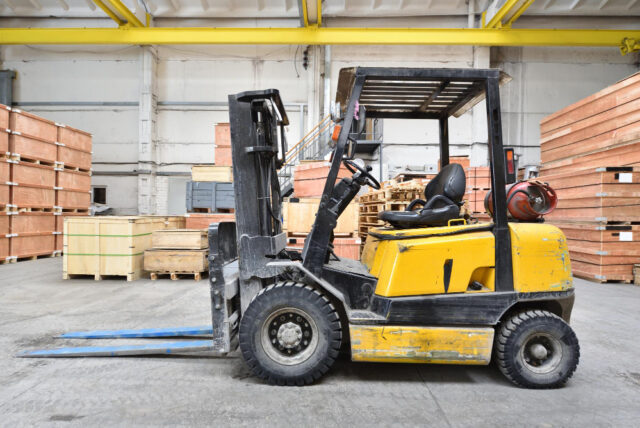
When it comes to expanding your material handling capabilities, the decision between a used forklift vs new forklift often comes down to budget, operational needs, and long-term planning. For Florida business owners managing warehouses, distribution centers, or manufacturing facilities, choosing the right lift truck can significantly impact both productivity and your bottom line.
Whether you’re running a small operation in Miami-Dade or managing a larger facility in Broward County, understanding the trade-offs between pre-owned and brand-new equipment helps you make a smarter investment. Companies like L&L Forklift & Equipment Repair in South Florida have seen firsthand how businesses across different industries weigh these options based on their unique circumstances.
What Are the Main Differences Between Used and New Forklifts?
The primary difference lies in cost, warranty coverage, and equipment history. A new forklift offers the latest technology, full manufacturer warranties (typically 3-5 years), and zero prior wear. Used forklifts, on the other hand, come at 30-70% lower prices but may have accumulated operating hours and wear patterns that require closer inspection.
New machines feature current safety standards, improved fuel efficiency, and modern ergonomic designs that reduce operator fatigue. Pre-owned industrial equipment varies widely in condition—some units with low hours rival new machines, while others may need immediate repairs or component replacements.
When Does Buying New Make Financial Sense?
Purchasing a new forklift makes sense when you need guaranteed uptime, plan to use the equipment intensively (over 2,000 hours annually), or require specific features not available in used models. Businesses with strict compliance requirements or those qualifying for tax incentives through Section 179 deductions often find new equipment more attractive.
The full warranty coverage protects against unexpected repair costs during the first few years, which matters greatly for operations that can’t afford downtime. Additionally, new lift trucks come with predictable maintenance schedules and no hidden mechanical issues from previous operators.
What Are the Advantages of Buying Used?
Cost savings represent the most obvious benefit. A well-maintained used forklift can perform reliably at a fraction of the price, allowing you to acquire multiple units for the cost of one new machine. This makes sense for seasonal businesses, startups with limited capital, or companies needing backup equipment.
Many pre-owned forklifts in the Florida market have relatively low operating hours because they came from businesses that upgraded their fleets early or went out of business. With proper inspection and maintenance, these machines offer years of dependable service. You also avoid the steep depreciation hit—new forklifts lose 20-30% of their value in the first year alone.
How Do Operating Costs Compare?
New forklifts typically cost less to maintain initially due to warranty coverage and the absence of worn components. However, fuel efficiency in newer models can reduce operating expenses by 10-15% compared to older units, particularly with electric or hybrid powertrains.
Used equipment may require more frequent servicing and parts replacement, especially for older models or high-hour machines. That said, a used forklift that’s been properly maintained can match new equipment reliability for several years. The key lies in understanding the maintenance history and budgeting for anticipated repairs.
Florida’s climate adds another consideration—heat and humidity can accelerate wear on hydraulic systems and electrical components, making regular preventative maintenance essential regardless of whether you buy new or used.
What Should You Inspect Before Buying Used?
Start with the forklift’s hour meter—industrial lift trucks typically last 10,000-20,000 hours depending on usage and maintenance. Request complete service records to verify regular oil changes, hydraulic system maintenance, and component replacements.
Inspect the mast and chains for wear, test all hydraulic functions, check tire condition, and examine the engine compartment for leaks or corrosion. The forks themselves should be straight with minimal wear on the heel. Have a qualified technician perform a load test to ensure the lifting capacity matches specifications.
For propane or diesel units, assess the fuel system condition. Electric forklifts require battery health evaluation—replacement batteries can cost $2,000-$6,000. Document any rust or structural damage, which is particularly important in coastal Florida areas where salt air accelerates corrosion.
Which Option Works Best for Your Situation?
Your operational requirements should drive the decision. Businesses running single-shift operations with moderate usage (1,000-1,500 hours annually) often find excellent value in quality used equipment. Multi-shift operations with demanding applications typically benefit from new forklifts’ reliability and warranty protection.
Consider your company’s growth trajectory as well. If you’re expanding rapidly and need fleet consistency, buying new allows you to standardize on one model with uniform maintenance needs. Smaller operations or those testing new markets might prefer the lower financial commitment of used equipment.
Financial flexibility matters too—leasing new equipment spreads costs over time, while purchasing used outright preserves capital and credit lines for other business needs.
Key Takeaways
- Cost difference: Used forklifts cost 30-70% less than comparable new models but may require more maintenance
- Warranty protection: New equipment includes 3-5 year warranties; used machines typically come with 30-90 day limited warranties
- Depreciation: New forklifts lose significant value immediately, while used equipment holds value better
- Operating hours: Target used forklifts under 10,000 hours with documented maintenance history
- Application matters: High-intensity operations favor new; moderate use suits quality pre-owned equipment
- Inspection is critical: Always have used material handling equipment professionally evaluated before purchase
- Consider total cost: Factor in maintenance, fuel efficiency, and potential downtime, not just purchase price
Making Your Final Decision
The used forklift vs new forklift debate doesn’t have a universal answer—it depends entirely on your operational demands, budget constraints, and risk tolerance. Many successful Florida businesses maintain mixed fleets, using new equipment for critical applications while relying on quality pre-owned units for supplementary needs.
Take time to calculate total ownership costs over your expected usage period, not just the sticker price. Whether you choose new or used, prioritize equipment from reputable manufacturers and ensure access to reliable service and parts. The right material handling solution balances immediate affordability with long-term operational efficiency, helping your business move goods safely and profitably for years to come.
Disclaimer
The information contained in South Florida Reporter is for general information purposes only.
The South Florida Reporter assumes no responsibility for errors or omissions in the contents of the Service.
In no event shall the South Florida Reporter be liable for any special, direct, indirect, consequential, or incidental damages or any damages whatsoever, whether in an action of contract, negligence or other tort, arising out of or in connection with the use of the Service or the contents of the Service. The Company reserves the right to make additions, deletions, or modifications to the contents of the Service at any time without prior notice.
The Company does not warrant that the Service is free of viruses or other harmful components












